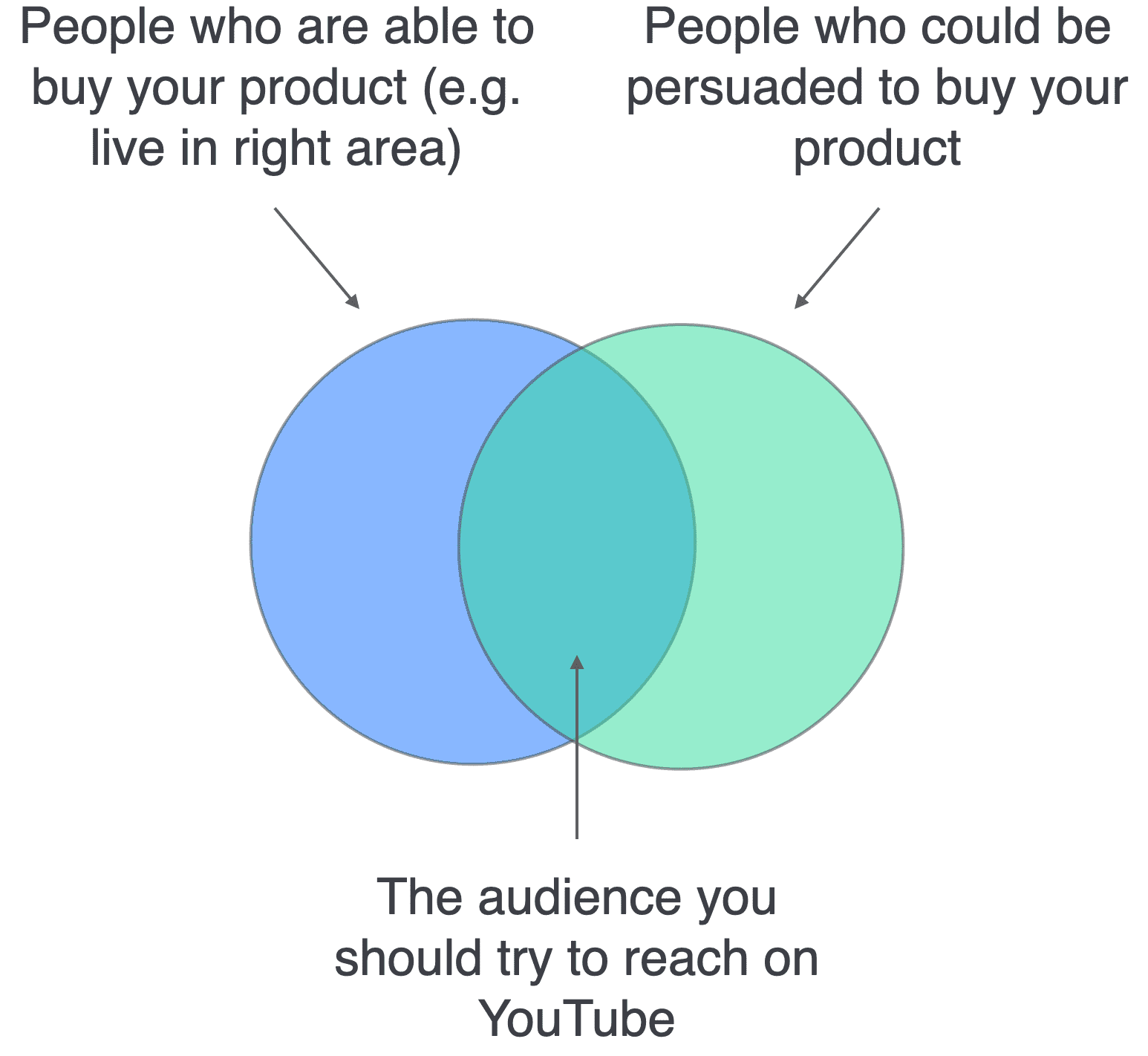Brand advertising on YouTube
YouTube is an excellent channel for brand building advertising | |
- The reach of YouTube in the US now exceeds linear TV among people 18-49
- This reach is delivered much more precisely than TV, especially against specific audiences (1)
- If used as a supporting channel alongside TV, YouTube is likely to deliver cost-effective incremental reach (for all age groups) (2)
Three main video formats to choose from
Length
Details
When to use
Skippable in-stream (TrueView)
Any
Only pay if a viewer watches to the end, or 30 seconds, or interacts
Choose these if you can get your message across with engaging creative (that viewers won’t want to skip)
Non-skippable in-stream
15 seconds
Like regular 15 second TV spots
Choose these if you have enough budget and want to go all-out for maximum reach (or if the other formats don’t work)
Identify your audience before you plan the advertising
Understand who makes a good prospect

Find a way to target them on YouTube
- Where – Location down to zip code level
- Who – Based on language, demographics, and what Google has inferred about them. This includes interest categories / affinity audiences (e.g. cooking enthusiasts), life events (e.g. marriage) and “in-market audiences” who are shopping for something (e.g. yoga apparel)
- Content your ad appears alongside – Keywords, topics (e.g. face care products), and “placements.” Placements can be specified videos or websites or “dynamic lineups”. Dynamic lineups are sets of videos around a topic in a country (e.g. “Cooking - Japan”)
They key thing is to reach people with the right interests & attitudes
- Attitudinal targeting is more effective than demographic. A study found 32% higher lift in ad recall and 100% higher lift in purchase intent when attitudinal targeting was used
- It’s possible to feature your ad alongside particularly high quality content (“preferred” / “select”) or to exclude certain content (e.g. profanity). This might be relevant from a PR standpoint, but the evidence is that as long as the audience is there, what they are watching doesn’t matter
Take advantage of frequency capping
- Frequency capping is the killer feature that makes YouTube so efficient at delivering reach
- As a guide, for launches cap views at 3, and for maintenance cap them at 1 per month
- For comparison, in the world of TV it takes ~500 GRPs to reach most people once
How-to guides from Google
- Set up a reach campaign in YouTube’s regular Google Ads interface, or the Display & Video 360 enterprise interface
- Cap frequency in the regular and enterprise interfaces
- Turn on reach reporting if necessary
Notes | |
- As Google point out, most TV ads are seen by heavy viewers. The more specific the audience, the more TV spend goes to waste
- On average, across 21 Share Shift studies Google commissioned with Nielsen “advertisers saw that shifting just 20% of spend from TV to YouTube generated a 25% increase to the total campaign reach within their target audience, lowering the cost per reach point by almost 20%”. It’s easy to compare the cost of reach on YouTube vs. TV, and decide which is best for you